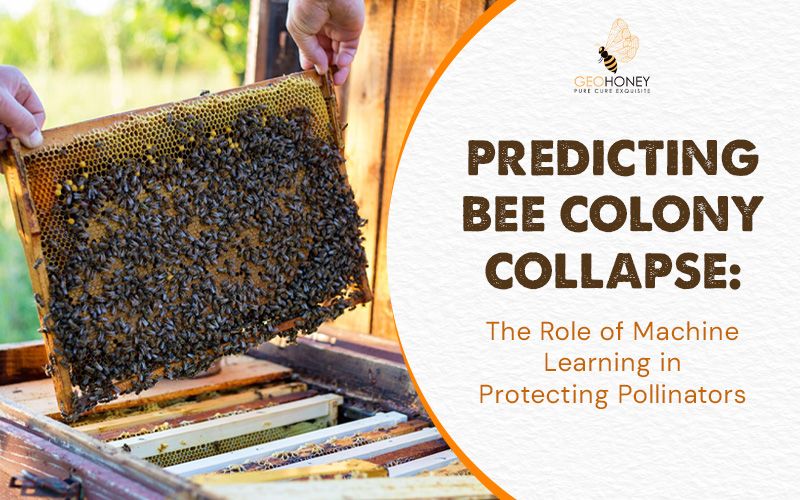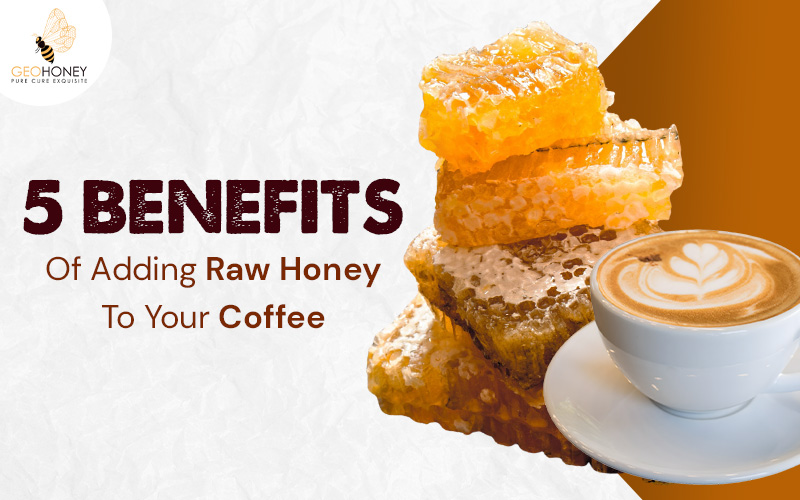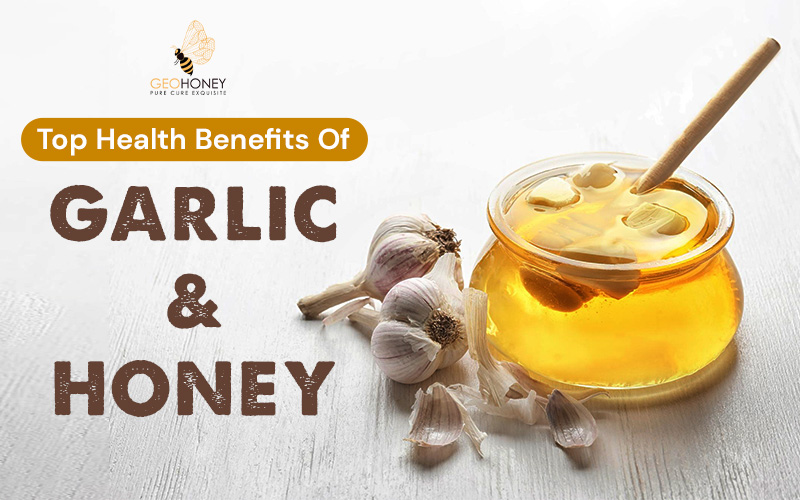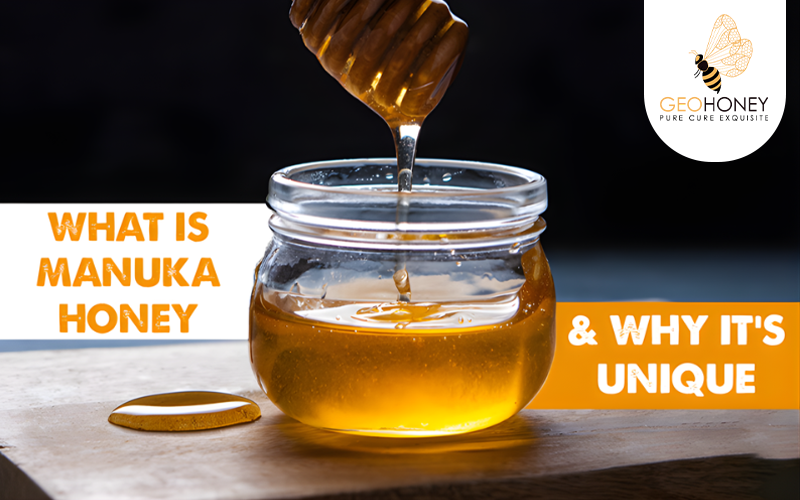- Tokyo: 13:59
- Singapore: 12:59
- Dubai: 08:59
- London: 04:59
- New York: 23:59
Our Blogs
Geohoney
2026 Honey Market Forecast: Prices, Demand & Big Shifts
Honey, or liquid gold as many call it, is heading into 2026 with substantial shifts in prices and demand. After long years of climate pressure, production fluctuation, changing consumer behavior, and other factors, honey is no longer "just" a sweetener. It is a strategic commodity. This article breaks down the 2026 forecast for honey, covering all you need to know: prices, demand, driving factors, and more. The global honey market is expected to grow from USD 9.73 billion in 2026 to USD 14.73 billion by 2035. The expected CAGR during this period is 4.7%. The honey industry has witnessed: 35% more investments in sustainable beekeeping practices 31% growth in e-commerce distribution 27% rise in the launch of flavored honey products As per the United Nations Conference on Trade and Development (UNCTAD), over 120 exporting countries are involved in global trade. Honey is recognized for its many benefits. For starters, it contains essential antioxidants and trace minerals and vitamins. Honey also boasts antibacterial, antimicrobial, and anti-inflammatory properties. These unique properties make it suitable for heart health, healing, weight management, and metabolism. Unlike sugar, its low glycemic index offers sustainable energy without glucose spikes. Thus, making it suitable for individuals with diabetes after careful consideration from doctors. One of the significant shifts brought about by rising health consciousness is the increasing demand for natural sweeteners. Raw honey, which is minimally processed and retains most of its natural enzymes and nutrients, is a great alternative here. Honey is an excellent skin-soothing and nourishing ingredient that finds its application in body lotions, moisturizers, face masks and even face washes. It helps reduce bacteria, intensely hydrates your skin, and speeds up the wound healing process. Furthermore, its results for even toning skin tone and treating acne, psoriasis, and eczema make it a sought-after ingredient. Functional foods are foods that are enhanced with specific nutrients that offer health benefits beyond just the basics. Honey is one such functional food. With over 200 components improving its medicinal and physiological properties, honey can be used in a variety of foods. These include: Biscuits Ice creams Breakfast items like shakes, oats, and toasts Breads and baked goods Sauces and marinades Its probiotic properties make it excellent for maintaining good gut health. This, in turn, improves overall metabolism and food absorption. The decline in bee colonies globally forced the farmers, environmentalists, and other stakeholders to make efforts using advanced AI, machine learning, and monitoring systems to protect bee colonies. The use of AI for hive monitoring has shown impressive results for improving colony health, preventing collapse and improving bee foraging. All these factors contribute to increased honey production by bees and harvest by farmers. We all know of honey varieties like Manuka, Oak, Acacia, etc. However, we are now seeing a rise in unique combinations that offer a deep flavor profile along with benefits. For instance: Turmeric honey for combating inflammation Ginger honey for supporting digestion Cinnamon honey to uphold metabolic balance Yuzu honey with an extra dose of Vitamin C Adaptogenic blends with ashwagandha and other herbs Similarly, unique floral sources are getting attention due to their characteristic flavor. Besides the popular clover and wildflower variants, some of the other variants whose demands may increase are Lavender, Sage and Orange Blossom honey. Additionally, farmers are now aiming at traceable sourcing and sustainable packaging as consumers become more interested in knowing what's in their honey and if it's environmentally friendly. This also comes in response to the decrease in bee colonies due to climate and other factors. In fact, the EU's 2024/1438 regulation now requires full batch-level traceability. Exporters that use tools like blockchain to clearly verify honey origin gain an advantage, while low-cost suppliers that can't prove authenticity risk being pushed out of the market. November 2024: Australia updated its EU TRACES listings for honey producers. The update added new certification requirements for edible beeswax exports under Regulation 2023/2652. January 2025: India's Directorate General of Foreign Trade extended the minimum export price for honey to USD 2,000 per metric ton through December 2025. The move aims to prevent under-invoicing and protect farmer income. February 2025: Researchers at the University of Columbia, Riverside, found that Electronic Bee-Veterinarian sensors reduced colony losses. With the ability to warn 3 days in advance about dangerous heat stress days, they can support large-scale use. It was expected to reach USD 11.5 billion in 2025. The Asia-Pacific dominates the market with approximately 39% of the share, followed by Europe at 32% and North America at 23%. The market is expected to grow at a CAGR of 4.3%. Thus reaching USD 14.2 billion by 2030. The United States has the highest regional consumption with strong demand for organic and raw honey in retail and industrial applications. Some other countries are Germany, France, and the United Kingdom. Extensive use in cough syrups, wound dressing, and topical gels has increased its demand. It accounted for approximately 20% of the honey market in 2025.What the Numbers Have to Say
Key Market Drivers
Rising Health Consciousness
Need for Natural Sweeteners
Booming Beauty and Skincare Industry
Functional Food
Growth of Precision Apiculture Technologies
Emerging Trends
Flavors
Sustainability
Recent Developments
FAQs
How big is the natural honey market?
What is the expected growth rate of global honey demand?
Which country has the highest honey consumption?
How is the medical use of honey impacting the demand?
Geohoney
The Most Expensive Honeys in 2026 and Why People Love Them
Honey has so many types that you cannot possibly get your hands on every single one. Every region with different floral species brings forth honey varieties that look and taste completely different. Some honey types have no rival when it comes to their rarity or exclusiveness. These honeys command much higher prices for their limited availability and a luxurious taste and texture. This blog lists some of the most expensive honeys that have a high demand among honey lovers globally. So keep on reading till the end. Here is What You Will Find in This Blog. Most Expensive Honeys in the World: 2026 Edition Sidr Honey – Yemen Manuka Honey – New Zealand Elvish Honey – Turkey Leatherwood Honey – Tasmania Centauri Honey – Turkey Reasons Why People Love These Expensive Honeys This section covers some of the most popular honey types that most honey lovers adore despite the heavy price tags. This honey belongs to the remote Hadramaut region of Yemen, where native Sidr trees grow. This mountain honey possesses potent healing properties, and the credit goes to its exceptional nutritional profile. Yemeni Sidr honey comes in a rich reddish amber hue, and its flavor has prominent herbal notes. Yemeni Sidr honey has deep cultural roots, where various ancient texts mention its use in medicine. This honey grows in remote mountainous regions where a lot of physical effort goes into harvesting. This limited production makes it highly exclusive. You can get a 1kg jar of Sidr honey for about $1,000 on average. Manuka honey is also an expensive honey that has no match when it comes to its nutritional profile. It comes from the nectar of the Manuka bush (Leptospermum scoparium) that grows in the remote regions of Northern New Zealand. This honey can cost hundreds to several thousand dollars per kg. The price of this honey varies based on its UMF or unique Manuka factor. This rigorous grading method determines Manuka honey’s authenticity and potency. Honey with UMF 15+ is what most honey lovers prefer. This honey comes with the highest MGO (Methylglyoxal) content, which is the reason behind its healing prowess. The nectar source of this honey grows only for 2 to 6 weeks. This limits the production of this honey, making it a very rare variety. This honey comes from the deep cave system in the Artvin region of Turkiye. One kilogram of this honey costs about $5000-$6000 and sometimes even higher. Only a few Kilograms of Elvish honey comes out every year. Beekeepers use traditional practices to extract this honey. This antioxidant-rich honey possesses a deep golden hue. It has a slightly bittersweet taste that is unique in every way. Elvish honey’s superior medicinal properties stem from its higher MGO and mineral content, which you don’t find in other honey types. Leatherwood honey comes from the nectar of the Eucryphia lucida, also known as the leatherwood tree. Native to the rainforests of Tasmania, this honey’s flavor possesses spicy but floral notes. This honey costs about $40to $3 per kilogram. Some premium quality products can also cost you about $150 per pound. Beekeepers from Tasmania ethically harvest this honey from pristine forests to ensure maximum purity. Leatherwood honey possesses a rich, earthy flavor with an exceptional nutritional profile. Centauri honey from the remote mountainous regions of Turkey is another expensive honey type that people love for its nutrient-richness. This rare honey comes at prices over $10000 per kg, which is a Guinness World Record. This honey is a collector’s item due to its exclusivity. Beekeepers climb 10-500-meter-deep caves to get to this honey. The extreme skill and effort go into the extraction of this honey. This is the reason why it comes with a much higher price tag. This section covers some notable reasons why so many people adore the expensive organic honey varieties listed in this blog. So, keep on reading to learn more. Exclusivity Expensive honey varieties have an element of rarity to them. Most of these honey varieties are seasonal. They also come from remote locations, which means their production is very limited. This makes these honeys so special. Potent Health Benefits Most expensive honey varieties are a powerhouse of nutrients and bioactive compounds. These honey types are rich in antioxidants and MGO. They also possess superior antibacterial properties along with health enzymes. Purity Every expensive honey comes from pristine areas where the flowers grow without human intervention. No pollution, along with minimum processing of these raw honey varieties, leads to their extreme purity. Unique Flavor Profile Unlike regular honey that possesses extra sweet flavors, expensive honey varieties have complex and rich flavor profiles. Each of these honey varieties has a characteristic flavor that you don’t normally find in any other honey. This is what makes honey enthusiasts instantly fall in love with these honey varieties. Cultural Value These honey varieties are so desirable globally because they represent specific cultures. Locals use age-old tools to harvest the honey. Every process, from harvesting to processing to packaging of honey, has deep cultural roots in these regions. The honey from these regions thus contains their cultural essence, which grabs the attention of so many honey enthusiasts. Visit Geohoney today to buy our wide range of luxury honey varieties sourced from skilled beekeepers all over the world. Turkish Centauri honey is the most expensive honey variety in the world. This honey comes exclusively from New Zealand’s remote locations. The geographical origins and limited production of this honey lead to higher prices. The limited blooming season of the floral source that goes into the creation of this honey leads to its higher process. The labor-intensive harvesting is another reason why this honey doesn’t come cheap. A honey variety tends to be expensive if it has limited production and very high purity. Unique health benefits and floral rarity also contribute to the high prices of certain honey types. Manuka honey belongs to extremely potent honey varieties. It has higher methylglyoxal (MGO) and dihydroxyacetone concentrations impart exceptional healing properties to it. Most Expensive Honeys in the World: 2026 Edition
Sidr Honey Yemen
Manuka Honey New Zealand
Elvish Honey Turkey
Leatherwood Honey Tasmania
Centauri Honey Turkey
Reasons Why People Love These Expensive Honeys
FAQs
Which honey is the most expensive in the world?
What makes Manuka honey an expensive honey type?
Why is Elvish honey so expensive?
What makes a honey variety expensive?
Which honey variety is considered to be very potent?
Geohoney
How Raw Honey Helps When Fasting
Fasting is meant to give your digestive system a small break, allowing it to rest and function even better. However, raw honey is becoming a popular addition to fasting routines lately because of its nutrient profile, energy supply, and the power to reduce common fasting discomforts. Adding small amounts of honey keeps your body stable, helping you make the most of this wellness-focused practice. This article explains the benefits of raw honey while fasting, along with some dos and don'ts. Before we dive deep, here are some key characteristics of honey: Phenol and flavonoids found in honey are anti-inflammatory, antiviral, and antioxidant, promoting good health. Gluconic acid, along with hydrogen peroxide from enzyme reactions, makes honey antimicrobial in nature. Darker honey variants contain more minerals and antioxidants than lighter variants. Intermittent fasting, 16:8 schedules and One Meal A Day (OMAD) fasting each allow different levels of flexibility. While water-only fasting leaves no room for calories, other wellness-based fasting types allow for small amounts of natural carbohydrates to maintain energy and mood. Raw honey is better suited for fasting consumption because: It is minimally processed Digests slowly Contains trace minerals and antioxidants It offers quick and steady energy These characteristics make raw honey a practical option for people who fast to maintain metabolic health, improve gut balance, or regulate weight. Raw honey boasts a balance of fructose and glucose. Your body absorbs it more gradually compared to refined sugar. This helps maintain energy during fasting windows without triggering the sharp highs or lows in the blood sugar. The steady energy release is crucial because it: Reduces the risk of mid-morning fatigue. Helps maintain concentration and mood. Supports physical activity like workouts during fasted hours One of the main reasons why individuals fast is to give their digestive systems a break. Raw honey complements this resting break as it contains oligosaccharides, which act as prebiotics. It helps promote the growth of good gut bacteria like Lactobacillus and Bifidobacteria for maintaining gut health. Consequently, it improves overall metabolism. Some of the other gut-related health benefits of consuming raw honey while fasting include: Reduces bloating by enhancing digestive powers and soothing the irritated stomach lining Smoothens digestion after breaking the fast Helps with a gentle transition to food Many people experience early fasting headaches. This can be due to a sudden change in the body's energy availability. Raw honey delivers steady energy without overwhelming the system. It releases the energy steadily, keeping your nervous system calm, helping your body adjust better. This energy helps you: Overcome irritability Manage light-headedness Fight off the mid-fast slump Honey plays a key role in supporting the body's repair process, given its composition. For starters, its antimicrobial properties prevent the growth of bacteria and infections. Secondly, it alleviates pro-inflammatory cytokines. Thus making it easier for your bodily tissues to repair themselves. Moreover, the controlled and gradual release of hydrogen peroxide in honey stimulates fibroblast production. This helps in tissue regeneration. Fasting also promotes the body's autophagy, which is the body's way of clearing out old or damaged cells. Raw honey promotes this activity by supplying antioxidants to reduce oxidative stress. Take ½ to 1 tsp before starting the fast to stabilise energy. Eat about ½ tsp of honey during fasts if you feel dizzy, mentally clouded, or overly fatigued. 1-2 tablespoons of raw honey, before 15-30 minutes, should be enough to support performance without overwhelming your digestive system. For high-intensity workouts, you may increase to 2-4 tablespoons. Avoid having heavy meals directly. Honey paired with warm water, herbal tea, or fruit helps ease digestion. It depends on your fasting method. If you are strictly on a water-only fast, consuming honey breaks the fast. However, if you are on intermittent fasting or circadian fasting, small amounts of honey are acceptable due to its prebiotic and anti-inflammatory profile. The key is to align with your personal goals. Geohoney is a global supplier of raw honey, focusing especially on wild and monofloral varieties. We offer over 200 types of honey, including popular variants like Acacia honey, Citrus honey, Manuka honey, and more. They're all harvested from farms across 500 locations globally, with the help of a new patented agri-tech initiative that aims to multiply the global honey supply. These raw honey variants are minimally processed, making them suitable for consumption during wellness-based fasting. Explore them today! ½ to 2 tablespoons of honey is ideal, depending on your goal for consumption. No, as honey has a low glycemic index. When consumed in small amounts, it is gentler on the blood sugar. Opt for raw honey over processed honey variants. You can try different types of honey from GeoHoney, like Manuka, Acacia, Oak, Thyme, and more. Although less, honey still contains sugar. It is best to consult a doctor before including it in your fasting routines or otherwise. Key Points to Remember
Role of Raw Honey While Fasting
1. Steady Energy Minus Blood Sugar Spikes
2. Supports Gut Health
3. Reduces Fasting-Related Discomforts
4. Complements Body's Repair Process
How to Use Raw Honey While Fasting?
1. Pre-Fasting
2. During Lifestyle Fasts
3. Before a Workout
4. When Breaking the Fast
Does Raw Honey Break Fast?
Raw Natural Honey from GeoHoney
FAQs
1. How much honey is ideal during fasting?
2. Can honey cause a sugar spike during fasting?
3. What type of honey works best?
4. Is honey safe for people with diabetes?
Geohoney
Predicting Bee Colony Collapse: The Role of Machine Learning in Protecting Pollinators
Pollinators are decreasing in numbers, and that’s bad news! Climate change, habitat destruction, and industrial farming are affecting the basic needs of these species. Their collapse is not just an issue for farmers but also for entire ecosystems and the global food supply.
Today’s article talks about the role of machine learning in protecting declining bee colonies.
Key Insights
Bees pollinate three-fourths of the global crops for human consumption.
Commercial honey bee colony losses in the US are projected to range between 60% and 70% in 2025.
However, reports from early 2025 suggest that bee populations in Asian countries have been steadily growing.
Machine Learning in Protecting Pollinators
1. Improving Colony Health
Temporal assessment of bee colony strength involves counting the number of comb cells with brood and food reserves. It needs to be done multiple times a year, and since there are thousands of cells inside a comb, counting them manually becomes time-consuming, tedious, and prone to errors.
Machine learning makes it easier to automate this process with the help of image processing techniques. It aids in automatically detecting cells and uses deep learning for cell content classification.
With frequent counting cycles and data from them, beekeepers can easily identify issues like low bee birth rate or a reduction in honey production. Based on this, they can plan on how to improve the colony's health based on several factors, like:
Weight
Population growth
Temperature and humidity
Brood and mortality
2. Identifying Stress from the Environment
Climate change is one of the biggest drivers of bee colony decline in various parts of the world. Factors like extreme heat, unpredictable rainfall, and changing flowering cycles affect bee nutrition significantly. This, in turn, impacts their ability to produce honey and survive at large.
Machine learning can forecast floral shortages, identify safe forage zones, and assess pesticide exposure risk. Additionally, it can predict seasonal stress on the colonies, equipping bee farmers with the data to make necessary adjustments.
3. Analyze Bee Activity
Bee activity is a critical indicator of colony health. A healthy colony exhibits high energy levels, with bees buzzing and the queen bee performing well.
Several attempts have been made to analyze bee activities with the help of Computer Vision and Object Detection techniques, YOLO v5. YOLO v5 is primarily used for real-time object detection, offering a balance of speed, accuracy, and ease of use.
A previous study done on 6,993 datasets using YOLO v5 for enhancing pollinator protection reveals that YOLO v5 is the fastest option, processing each frame at 5.7 milliseconds. The final model was added to an explainable AI system that created time-stamped visual summaries. This makes the results easy to understand for non-technical users and stakeholders in the beekeeping industry. This helps support better, more sustainable pollinator management.
4. Tracking Parasites and Diseases
Varroa destructor mites are capable of causing significant harm to the bees as they feed particularly on larvae and adult workers. Their feeding impacts the bees’ immune systems and even impairs their reproduction.
Traditionally, farmers use an integrated pest management approach, combining chemical treatments with natural methods. Machine learning can analyse hive audio, video, and sensor data to detect early signs of parasitic infestation or viral infections.
Thus, instead of routine chemical treatments, which may harm bees, AI enables targeted action only when needed.
5. Predicting Collapse Patterns
Machine learning is characterized by pattern learning and recognition. Researchers can train models on years of hive data, allowing for the prediction of:
High-risk colonies
Environmental factors driving decline
Time until a colony collapses
Specific interventions that can reverse the trends
This prediction, which can happen weeks in advance, can help farmers create conducive conditions to preserve and improve colony health for better survival.
6. Support Beekeepers with Futuristic Insights
Besides preserving colony health and recognizing patterns, machine learning tools can drive personalized insights such as:
Best hive placement
Expected honey yields based on bee activity
Migration strategies for commercial pollination
Stress periods during upcoming weather events
This makes beehive management easier and efficient, reducing losses.
FAQs
What causes bee colony collapse?
Factors like parasites, diseases, pesticides, loss of habitat, malnutrition and climatic changes lead to the collapse of bee colonies.
How long can a colony survive without the queen bee?
Colonies do not collapse immediately. However, as the older bees die, there will not be more bees to replace them. Consequently, over the next 2-3 months, the colony eventually fails.
How does artificial intelligence affect beekeeping?
AI helps farmers monitor bee and hive health in real-time and identify potential issues such as pests or diseases. Furthermore, collects data on hive activity and environmental conditions for analysis using machine learning to identify various patterns.
How does machine learning help optimize hive management?
By studying patterns, machine learning algorithms can provide suggestions on when to move hives, when to add or remove frames, and when to harvest, too.
Geohoney
Does Honey Help Reduce Anxiety?
Honey has long been celebrated for its healing properties. It is frequently used to control digestive, cardiac, and infectious ailments. As such, many people wonder if it can also help calm anxiety. What does the research have to say?
While honey may support brain health, reduce inflammation, and help regulate stress responses, it’s not a standalone treatment. Here’s a clear breakdown of what honey can and cannot do when it comes to easing anxious feelings.
Key Insights About Honey
Here’s what recent research has to say about the properties of honey, its composition, and its impact.
Honey offers the following 4 main brain health benefits: memory booster, neuroprotective effect, anti-stress, and anti-nociceptive potentials.
Animal studies have found that honey may help shield dopamine-producing neurons by offering antioxidant protection against damage caused by oxidative stress. Oxidative stress is a factor closely linked to anxiety and depression.
Studies found that honey lowered basal cortisol levels in rats exposed to chronic stress, suggesting its potential to ease stress-related depression. Tualang honey appeared more effective in managing stress-linked weight changes, while Acacia honey showed stronger benefits for reducing depressive symptoms.
How Honey May Influence Anxiety
While there are linked benefits, it's important to note that honey cannot be a standalone treatment option for anxiety. Here’s how honey may impact anxiety levels:
1. Antioxidant Support
Oxidative stress is a result of oxidant/antioxidant imbalance; either an excess of oxidants or a depletion of antioxidants. Since the brain consumes a high amount of oxygen, it is at higher risk of oxidative damage.
Honey, especially raw or darker varieties, contains high levels of flavonoids and phenolic acids, which act as natural antioxidants. They help neutralize free radicals, which can trigger inflammation and oxidative stress in the brain.
Both of these issues are linked to heightened anxiety, mood imbalance, and cognitive strain. By reducing this internal “stress” on the brain, honey may help create a more stable environment for emotional regulation.
2. Possible Neuroprotective Effects
Hippocampus plays an important role in memory and emotional regulation by forming and retrieving emotional memories, particularly those related to anxiety and fear. Some small animal studies suggest certain compounds in honey may support the hippocampus. Specifically, honey was found to have improved neuron growth in the hippocampus and lower oxidative stress levels. While these findings aren’t definitive, they hint at honey’s potential long-term benefits for mood stability.
3. Blood Sugar Regulation
Sharp spikes or drops in your blood sugar levels can lead to irritability and a jittery feeling. Honey has a low glycemic index, meaning it provides stable energy to your body without crashing. This stability in energy may create a steadier and calmer baseline for some people.
4. Sleep Quality Boost
Sleep and anxiety share a significant connection, whereby anxiety can impact the quality of sleep, and lack of sleep can make you more prone to feeling anxious during the day.
In fact, an article on Comorbid Insomnia and Psychiatric Disorders reveals that insomnia is the most common sleep disturbance associated with anxiety disorders. People with generalized anxiety disorder (GAD) often struggle with falling asleep, staying asleep, and experience restless or poor-quality sleep.
Consuming honey before bed is a popular home remedy for restoring sleep as it encourages the release of melatonin, a sleep hormone. The glucose in honey can prompt the brain to reduce orexin activity, a chemical responsible for keeping us alert. This may help people fall asleep more easily and enjoy deeper, more restful sleep.
5. Gut–Brain Connection
Honey has prebiotic properties that support healthy gut bacteria. Since gut health is tied closely to mood and anxiety, this may offer mild emotional benefits over time.
What Honey Cannot Do
Although honey offers significant benefits, directly and indirectly, there are some things you must remember at all times.
Honey will NOT cure anxiety.
It cannot replace therapy, lifestyle changes, or medication when needed.
It will not stop panic attacks or chronic anxiety disorders by itself.
Honey is not a primary solution; instead, it is a small supportive tool. Explore Geohoney’s range of wild and monofloral honey sourced from across 500 locations globally.
FAQ
1. Can honey calm anxiety immediately?
No, it cannot calm anxiety like anxiety medications. Honey can help you stabilize energy levels and feel calmer when added to teas.
2. Is honey scientifically proven to reduce anxiety?
Research is limited. Animal studies show promising results, but there is not enough evidence from human studies yet. That being said, honey does support brain health in ways that may reduce anxiety over time.
3. How much honey should I take?
A teaspoon to a tablespoon per day is common for general wellness.
4. Can honey help with sleep problems?
Yes, honey before bedtime can encourage melatonin release, stabilize sugar levels, and regulate your mood for better sleep.
5. Should I replace honey with sugar?
It is a healthier swap in many cases. Consult with your doctor before switching.
Geohoney
Five Benefits of Adding Raw Honey to Your Coffee
Raw honey can upgrade your daily coffee in more ways than just sweetness. It can add antioxidants, natural enzymes, and a steadiness in energy release, which you don’t find with refined sugar. If you want better flavor and functional benefits, switching to raw honey is one of the simplest changes you can make.
This blog breaks down 5 benefits of adding raw honey to your coffee.
Key Takeaways
Here’s a glimpse of all the benefits you enjoy when you switch to honey for your coffee:
Nourish your body with more nutrition and antioxidants.
Enjoy stable energy release rather than jitters and energy crashes.
Soothe your digestive system and possibly improve gut health.
Enhance flavour naturally.
May help boost metabolism.
Cut down on processed sweeteners without compromising taste.
Reasons Why Adding Honey to Your Coffee is a Good Idea
1. Natural Antioxidant Boost
Raw honey is a rich source of bioactive compounds, including phenolic compounds, flavonoids, enzymes, and small amounts of Vitamin C and other minerals.
Phenolic compounds and flavonoids work by neutralizing free radicals in your body, which would otherwise damage your cells, accelerate ageing, and promote inflammation. The best part? Raw honey retains natural antioxidants because it’s minimally processed.
Furthermore, darker varieties, like wild forest or monofloral honeys, contain even higher levels. Many other refined sweeteners, in comparison, offer no additional nutritional value beyond sweetness.
Coffee itself is already one of the most antioxidant-rich beverages consumed globally. So when you combine the two, you get a powerful antioxidant pairing.
2. More Stable Energy
Caffeine in the coffee is known to keep you up and active. As a result, many people consume it at the start of the day or before going to the gym. However, many people also report feeling anxious and jittery after consuming a lot of coffee. They add sugar for an instant hit of sweetness, which often comes with a downside: rapid glucose spikes followed by energy crashes.
Raw honey behaves differently. It contains fructose + glucose in a natural ratio that digests more slowly. Moreover, it has a lower glycemic index than refined sugar. This means fewer energy crashes between your morning coffee and lunchtime.
It balances the downside of having too much coffee by releasing energy slowly and steadily, so you do not reach for another cup to keep you going.
3. Supports Digestive Health and Gut Balance
Research suggests that eating too much sugar can upset the balance of good bacteria in your gut. When this balance is disturbed, it can trigger more inflammation and weaken your gut’s natural protective lining. Over time, this can lead to problems like low-grade inflammation, metabolic issues, and other health concerns.
Raw honey contains natural enzymes and prebiotic compounds such as Oligosaccharides, which feed good gut bacteria, essential for digestion and immune function. Additionally, raw honey also reduces inflammation and enhances nutrient absorption.
While beneficial, coffee can sometimes irritate sensitive stomachs. Raw honey’s soothing properties balance this effect, making coffee more enjoyable.
4. Enhances Coffee’s Flavor Profile Naturally
Coffee boasts a vibrant flavour profile, depending on where it has grown. Unlike refined sugars, which add only sweetness, raw honey adds depth and complexity. For instance, floral notes, Light caramel tones, or fruit-like undertones, depending on the variety.
Raw honey pairs exceptionally well with the following varieties of coffee:
Light and medium roast coffees
Cold brews
Herbal or spiced coffees
Milk-based coffees (lattes, cappuccinos)
Try the following different kinds of honey from Geohoney with your coffee for a distinct flavour:
Wildflower honey adds a bright, aromatic sweetness with hints of caramel and citrus.
Forest honey adds a deep, earthy character with slight saltiness.
Acacia honey has a clean, mild profile perfect for subtle sweetness.
Manuka honey has a caramel, nutty, and herbal taste.
5. Better Alternative for People Trying to Reduce Processed Sugar
Health consciousness is on the rise today. Most people are actively reducing their intake of processed sugar for various reasons, such as weight management, metabolic health, or overall wellness. Raw honey offers a way to enjoy sweetness while choosing a more wholesome option.
It’s a practical solution because you typically require less honey than sugar to achieve the same level of sweetness. As a result, it reduces your reliance on synthetic flavour enhancers. Finally, it fits nicely into natural or minimally processed diets.
FAQ: Adding Raw Honey to Coffee
1. Does heat destroy the nutrients in raw honey?
Yes, heating raw honey can destroy some of its enzymes and nutrients. Best to add it at temperatures below 40°C (104°F) to preserve its composition. High heat can also lead to the formation of harmful compounds.
2. Is raw honey healthier than sugar?
Yes, raw honey is a healthier option because it contains traces of nutrients, antioxidants, and enzymes. At the same time, sugar is a calorie-only ingredient with no real nutritional value.
3. Can people with diabetes use honey in coffee?
Only with a doctor’s consultation. Honey still affects blood glucose, though more slowly than refined sugar.
4. How much honey should I add to my coffee?
Start with 1/2 - 1 teaspoon. Adjust as per your taste.
5. What type of honey works best in coffee?
Choose buckwheat or chestnut honey for medium-roast coffee, and a lighter honey like clover honey for light-roast coffee.
6. Can I add honey to iced coffee?
Yes, you can. Dissolve the honey in warm water before adding it to the drink to avoid crystallization.
7. Does raw honey change the texture of the coffee?
No, it does not. Like sugar, it dissolves evenly into the coffee without affecting its thickness.
Geohoney
Is Raw Honey Safe for Diabetics? What Science Actually Says
People who suffer from diabetes have to be extra mindful about what they eat. Diabetic people often seem to ask whether adding raw honey to their diet is safe or not. The short answer is yes. These people can use raw organic honey in moderation to get natural sweetness and nutrition in their diet without risking blood sugar spikes. But what exactly does science say about these claims? This is what this blog is all about. So, keep on reading till the end. Key Takeaways Raw honey has a low glycemic index of about 50-65, which leads to a slower rise in your blood sugar levels. Diabetics can use about a tablespoon of honey at a time to manage their sugar levels. Honey is generally more nutritious than sugar. However, it still raises your blood sugar considerably, and that is why you need to take it in moderation after monitoring your blood glucose after consumption. Honey is sweeter than regular sugar, which means it is consumed less per serving. Nutritional Facts About Raw Honey Honey is a nutritious natural sweetener that is made up of plenty of healthy components. The following table lists some amazing facts about the nutritional profile of raw honey. A tablespoon of honey has: Calories 64 Sugar 17g Carbohydrates 17g Protein 0.06g Fibers 0.04g Vitamins B, C, and A Minerals Iron, potassium, calcium, Zinc, etc. Antioxidants Phenols, flavonoids Here is what this blog covers: Honey and Blood Sugar Levels: What the Science Says Honey for Diabetics: Key Benefits Tips for Using Raw Honey If You Are Diabetic Raw honey consists of about 30% to 45% fructose, 24% to 40% glucose, 5% sucrose, water, and a trace amount of minerals. Refined sugar, on the other hand, contains 50% glucose and 50% sucrose, which are absorbed in the small intestine, which breaks them down and transfers them to your bloodstream. But in the case of honey, fructose content is greater than glucose. Fructose is metabolized slightly differently in your body. Fructose is first converted into glucose, glycogen, and lactate, which then enter your bloodstream. This additional process leads to a slower rise in your blood sugar levels. A study published in the Journal of Nutritional Science has shown that the rise in blood sugar levels is gradual and sustained when you consume honey as compared to table sugar, which gives you an immediate blood sugar spike. The Glycemic Index Glycemic index (GI) is a numerical scale between 0 and 100 that gives you an idea about how fast a carbohydrate source can raise your blood sugar levels after consumption. Based on the floral origins, most honey varieties have an intermediate glycemic index between 46-64. On the other hand, regular sugar has a GI of more than 80. This indicates that raw honey causes a slower and more gradual rise in your blood sugar levels. This slower rise results from a high fructose to glucose ratio and the presence of polyphenols that increase your body’s insulin sensitivity. So, Can Diabetics Have Honey? Generally, it is okay for people with diabetes to consume honey in moderate amounts. Despite having a lower GI, honey still contains carbohydrates, glucose, and fructose that can raise your blood sugar levels considerably. However, these carbs are easier to digest and have a slower impact on your blood sugar levels. So, if you suffer from diabetes, it is advised that you add honey to your diet after consulting your doctor or dietitian to stay on the safe side. The following are a few science-backed benefits of raw honey for managing diabetes. Honey consumption is linked to lower LDL, higher HDL, and reduced triglyceride levels. These features of honey result from its high antioxidant content, which leads to improved cardiovascular health. Most diabetic patients suffer from chronic inflammation, which damages your cells and reduces their immune response. Honey contains antioxidants like flavonoids, phenols, and some additional anti-inflammatory compounds. These compounds reduce oxidative stress and help you fight free radicals. This way, pure honey ensures that diabetics are able to enjoy a safer and healthier life. Diabetes reduces your body’s ability to heal itself faster. Slow recovery times and risks of infections are increased, which can create several issues down the line. Diabetics can apply raw honey topically to minor burns and wounds to promote faster healing. Honey kills infectious bacteria and promotes tissue repair, which leads to much better wound care. A study published on ResearchGate has shown that diabetics who consume raw honey show a much better antioxidant status. Honey and honey-based remedies contains phenolic acids, phenols, and other key components that help your body combat oxidative stress, which leads to better immunity and overall health. Honey acts as a prebiotic. It feeds beneficial gut bacteria like Bifidobacterium and Lactobacillus in your gut, which reduces issues like indigestion, acid reflux, and digestive discomfort. Honey’s antimicrobial and anti-inflammatory features prevent the growth of harmful bacteria in your gut, which gives you a healthier digestive system. Honey has been found to enhance your body’s insulin sensitivity over time. High insulin sensitivity means your cells can effectively use insulin to take up glucose from your blood, which leads to stable blood sugar levels. The following are a few things you need to keep in mind if you are diabetic and you wish to add raw honey to your daily diet. Make sure to only take about a teaspoon of honey a day. You can also take a tablespoon of it if your doctor says so. You can pair it with protein sources like nuts, Greek yoghurt, and whole-grain bread, which slow down glucose absorption. Choose dark honeys like Manuka or Chestnut that also have high antioxidant content. Monitor your glucose levels before eating honey and after about an hour to assess your tolerance and to adjust the dosage. Eating honey or any other sweetener doesn’t directly cause diabetes. It only leads to a rise in your blood sugar levels. Diabetics can use natural sweeteners like raw honey, stevia, or monk fruit extract, which have a low glycemic index. Sugar-free honey is a modified form that contains sugar alcohols. This honey has a smaller impact on your blood sugar levels, which makes it a safer option for diabetics. Diabetics can use pure raw honey without added sugars in moderation. This honey has a low glycemic index, but it can still spike your sugar levels if you consume it in excess. If your blood sugar levels are not well-managed and are consistently high or fluctuating, you need to steer away from raw honey.Honey and Blood Sugar Levels: What the Science Says
Honey for Diabetics: Key Benefits
Leads to a Better Lipid Profile
Has Anti-inflammatory Effects
Supports Wound Healing
Contains Antioxidants
Enhances Gut Health
Insulin Sensitivity
Tips for Using Raw Honey If You Are Diabetic
FAQs
Can honey lead to diabetes?
What are the safe sweetener options for diabetics?
Is sugar-free honey ok for people with diabetes?
Can diabetics have pure raw honey?
When should diabetics avoid raw honey?
Geohoney
The Mathematics of a Beehive: Why Bees Are Natural Engineers
A beehive is a sturdy and intricate network of perfectly aligned hexagons made by nature’s talented engineers, called bees. Honey bees create these mathematical structures so flawlessly that it has baffled researchers, architects, and biologists for centuries.
An organic honeycomb is an engineering marvel that is built by insects that are no more than half an inch in size. This blog throws some light on the amazing mathematics of beehives, focusing specifically on the role that bees play in their creation. So, keep on reading till the end.
Here are some key takeaways and interesting insights for you.
Beehives have captivated the minds of thinkers for centuries.
Roman scholar Marcus Terentius Varro said that bees make hexagonal structures of beehives as they are most stable and store the most honey with the minimum amount of wax used. He named this the honeycomb theorem.
In 1999, mathematician Thomas Hales proved the honeycomb theorem.
The hexagonal shape creates minimal gaps in the structure, uses the least material, and provides maximum strength.
Engineers have borrowed the hexagonal honeycomb design in a wide range of fields, including lightweight construction, packaging, architecture, aerospace engineering, etc.
Here is what you will find in this blog
Hexagons: Why Bees Use This Shape?
The Natural Engineering Prowess of Honeybees
Warm Wax and Collective Behavior: Key Ingredients to Make a Hexagon
The Honeycomb Conjecture: An Age-Old Mystery Finally Resolved
The Mathematical Precision of the Hives
The Sun as a Blueprint
Maximum Heat Distribution in Hexagons
Excellent Wight Bearing Capacity
Thermal Chimney in Beehives
Hexagons: Why Bees Use This Shape?
Let’s start with why bees choose the hexagon shape for the cells of the hive. It has been mathematically proved that a hexagon is among the most efficient ways to tile any flat plane without gaps and with the least amount of material. This arrangement is also associated with superior strength and durability.
The following are some main reasons why this shape is preferred by the bees.
Hexagons Leave No Gaps
Squares, equilateral triangles, and regular hexagons are the only shapes that can tile a flat surface without leaving considerable gaps. However, among these shapes, hexagons are the only ones that possess the largest area relative to their perimeter. This leads to the storage of most honey with the least wax and an even spread of forces across the walls of the beehive.
They Minimize Wax Use
Bees have to consume about 6-8 pounds of raw honey to produce a single pound of wax, which makes it a resource and energy-intensive process. By using hexagon shapes, bees save up to 40% and 30% wax compared to using circular and square-shaped cells.
High Strength to Weight Ratio
Hexagonal structures give hives a remarkable strength-to-weight ratio. These structures give the hives a stable load distribution, low weight, and high rigidity. This is what imparts these hives an exceptional weight-bearing capacity.
The Natural Engineering Prowess of Honeybees
The following are a few points that underscore the mathematical prowess of honeybees, which indicates why these are nature’s top engineers.
Warm Wax and Collective Behavior: Key Ingredients to Make a Hexagon
Bees do not directly make hexagons. Initially, they create cylindrical wax cells while the material is still pliable and warm. As thousands of bees work together inside the hive, more heat is produced, which further warms up and softens the wax.
These cylinders press against each other from all sides. The combination of heat flow and surface tension allows the walls to settle down in the shape of hexagons. This way, bees utilize basic physics laws to create these amazing structures.
The Honeycomb Conjecture: An Age-Old Mystery Finally Resolved
In 36 BC, Marcus Varro, a renowned Roman scholar, came up with the honeybee’s geometry theorem, also known as the honeycomb conjecture. He said that the bees use this shape because a hexagonal grid is the most efficient way to divide any surface into regions of equal area with minimum total perimeter.
This statement was proven in 1999 by a mathematician named Thomas C. Hales. He published a proof which showed that a hexagonal tiling can minimize the boundary length of any given area, which leads to the use of the least total wall material.
Turns out, honey bees realized this truth millions of years ahead of us humans.
The Mathematical Precision of the Hives
It is also interesting to note that honey bees do not create perfectly vertical hexagonal cells. Instead, they tilt them upward about 13o which prevents the honey from spilling out.
The base of each cell is made of three rhombus panels that meet at angles of 109.47° and 70.53°, which is the same geometry that is seen in molecular structures and crystals. Bees instinctively use this geometry to maximize the strength of the hive without using a lot of material.
The Sun as a Blueprint
Bees use polarized light, sun positioning, and memory-based internal maps for navigation. This data helps them orient combs at very precise vertical angles. Bees also use this information to make key structural elements of the hives, which impart greater strength to them.
Maximum Heat Distribution in Hexagons
The uniform hexagonal shape spreads the heat evenly inside the hive. This temperature stability is essential for the growth and survival of the larvae. This shape minimizes heat loss in the winter and maintains the brood temperature at 34.5,which ensures the safety of both the hive and the colony.
Excellent Wight Bearing Capacity
Bees create hives using hexagons that possess exceptional load-bearing capacities. The structure of the hive can support up to 30x its weight. And not just that, a single hive can contain more than 44 pounds or about 20 kg of bee honey. This superior strength is the result of the intricate craftsmanship and engineering talent of the honey bees.
Visit Geohoney today to learn more about bees and to explore our premium quality, raw, and pure honey varieties that promise the best flavor and health benefits all in one.
FAQs
What is the geometric shape of a beehive?
The geometric shape of a beehive is a hexagon. This shape gives the hive greater strength, storage capacity, and weight-bearing capacity.
How do honey bees use math?
Honey bees can perform addition and subtraction using colors as symbols with minimal training. These creatures can also distinguish between odd and even numbers.
What is the honeycomb theory in math?
This theory states that a regular hexagonal grid gives you the most efficient way to divide a surface into regions that have an equal area and the least total perimeter.
Are honey bees mathematicians?
Bees are nature’s mathematicians because they can create efficient geometric structures and understand complex concepts like addition, subtraction, and zero.
Geohoney
The Powerful Health Benefits of Garlic and Honey
You’ve probably used garlic in your food and honey in your tea. But did you know that when you mix them, they become one of the most powerful natural remedies out there? They strengthen immunity, protect the heart, improve digestion, and decrease inflammation.
Modern science increasingly supports what traditional medicine has long believed. This simple combination offers wide-ranging therapeutic benefits that can naturally enhance overall well-being.
1. Boosts Immunity and Fights Infections
Both garlic and honey are rich in antimicrobial, antiviral, and antioxidant compounds that strengthen the immune system. Garlic’s main bioactive compound, allicin, exhibits strong antibacterial and antiviral effects, effectively fighting harmful microbes. On the other hand, honey is packed with natural enzymes and antioxidants that soothe the throat, fight free radicals, and boost immune function.
When consumed together, these two ingredients help the body resist common infections such as colds, coughs, and the flu. In fact, garlic-infused honey can inhibit the growth of bacteria and viruses, offering protection against respiratory illnesses.
Are you someone who keeps falling sick? If yes, this combo can really help. Just take one teaspoon of garlic-infused honey every morning. It strengthens your immunity and helps your body recover faster when you do get sick. Plus, it’s all-natural. No medicines needed.
2. Supports Heart Health
Garlic is known for keeping cholesterol in check. It decreases bad cholesterol (LDL) and lowers blood pressure. It also stops plaque from building up in your arteries. That means better blood flow and a lower risk of heart disease.
Honey complements these effects. It stabilizes blood sugar and improves blood flow. Its antioxidant content helps protect blood vessels from oxidative damage. Together, garlic and honey can help maintain healthy arteries, lower hypertension, and enhance heart function. Consequently, regular consumption is particularly beneficial for individuals prone to cholesterol issues or high blood pressure.
3. Aids Digestion and Gut Health
Ever feel bloated or uncomfortable after eating? Garlic and honey can help fix that. Garlic stimulates the secretion of digestive enzymes. This helps the stomach process food more efficiently. Meanwhile, honey acts as a natural prebiotic. It feeds the beneficial bacteria in the gut and promotes a balanced microbiome.
When your gut is happy, your whole body feels better. This combo can relieve constipation, reduce bloating, and improve nutrient absorption.
Pro tip: Take a spoonful of honey mixed with crushed garlic before meals to enhance digestion, improve nutrient absorption, and promote a healthy gut environment.
4. Decreases Inflammation and Joint Pain
Inflammation is often the hidden reason behind constant aches and joint pain. Garlic contains sulfur compounds that possess strong anti-inflammatory properties. This helps decrease swelling and pain. Honey adds to this benefit. It soothes tissues and reduces oxidative stress, making it a natural anti-inflammatory agent.
Regular consumption of garlic and honey may help ease joint stiffness and muscle soreness. If you have arthritis or sore muscles, this mix can help. It won’t work overnight. But regular use can ease pain and make your body feel lighter and more relaxed. A gentle, natural way to deal with inflammation. Plus, no side effects of pills.
Pro tip: Apply a mixture of crushed garlic and honey topically to soothe localized pain or swelling.
5. Aids Weight Management and Metabolism
Trying to manage your weight naturally? Garlic and honey can help here too. Garlic boosts metabolism and helps your body burn fat faster. Honey gives a bit of sweetness without raising your blood sugar suddenly.
A popular natural remedy involves taking garlic and honey mixed in warm lemon water on an empty stomach. It helps curb appetite, improves digestion, and gives a small energy boost to start the day. Not a magic solution. You still need healthy food and lifestyle. But it definitely supports your weight goals.
6. Enhances Skin and Oral Health
This combo is great for your skin too. Both garlic and honey are loaded with antioxidants and antibacterial properties. If you struggle with acne, try applying a small amount of garlic-honey paste to the affected area. It helps kill acne-causing bacteria and soothes the skin.
Your mouth benefits too. Garlic and honey fight bacteria that cause cavities and gum infections. These ingredients improve appearance and support a healthy, infection-free mouth.
Pro tip: Gargle with a diluted mixture of garlic and honey or apply a mild paste to gums to promote oral hygiene naturally.
7. Regulates Blood Sugar Levels
Garlic and honey stabilize blood sugar when consumed in moderation. Garlic enhances insulin sensitivity. This helps the body regulate glucose more efficiently. Honey is naturally sweet. Still, it has a lower glycemic index than refined sugar and releases energy slowly.
Together, they can help prevent sudden spikes or crashes in blood sugar levels. For individuals with diabetes or insulin resistance, moderate consumption of garlic-honey mixtures under medical guidance can support better blood sugar control and metabolic health.
8. Promotes Respiratory Health
Garlic acts as a natural expectorant. So, it can clear mucus and ease congestion in the respiratory tract. Its antimicrobial properties also target infections that affect the lungs and airways. Honey is known for its soothing and anti-cough properties. It calms irritated throats and decreases coughing frequency. Great for people who get colds often or struggle with asthma or bronchitis.
Pro tip: Take a spoonful of warm garlic honey before bed to help soothe the throat and promote restful sleep during illness.
9. Boosts Energy and Reduces Fatigue
Garlic increases blood flow and oxygen delivery to the body’s tissues. This improves endurance and vitality. Honey is a natural source of simple sugars like glucose and fructose. So, it provides an instant yet sustained energy boost.
When taken together, they enhance stamina and reduce fatigue, whether from physical exertion or daily stress. A great natural energy tonic, especially when consumed in the morning or before workouts.
10. Detoxifies the Body and Enhances Vitality
Garlic and honey support the body’s natural detoxification process. Garlic stimulates liver function. This helps to eliminate toxins and purify the blood. Honey, with its antioxidant and enzymatic properties, supports this cleansing process and helps with tissue repair.
Regular consumption of this mixture can lead to improved skin clarity, better digestion, and a greater sense of energy and well-being. In the long run, it contributes to better vitality and resilience against disease.
Conclusion
From strengthening immunity and improving heart health to supporting digestion, skin, and metabolic balance, this combination of garlic and honey offers a holistic approach to wellness. So, incorporate it into one’s daily routine. Start small. A spoonful a day is enough. Stay consistent. Listen to your body. You’ll start to feel the change soon.
After all, it can promote better health naturally. You won't have to rely solely on synthetic supplements or medications.
GeoHoney’s collection of over 200 monofloral honey and wild honey brings 100% raw, natural, and organic honey right to your doorstep. We deliver globally at affordable prices. All our honey is freshly harvested from across 500 locations globally while keeping the wellbeing of the bees and our planet in mind. Explore them today for a healthy life!
Geohoney
What Is Manuka Honey and Why It’s Unique
In the world of natural sweeteners, remedies, and superfoods, nothing can beat the exotic Manuka Honey. This flavor-rich and nutrient-dense substance is the top priority for honey lovers all over the globe. This special honey variety is exclusive to New Zealand, where the natives have been using it as a potent healing agent and culinary ingredient for ages. Apart from possessing a complex and rich flavor, this honey also has exceptional antibacterial properties. “Manuka honey is a powerhouse of nutrients, and its regular use can make you both look and feel energetic all day, every day.”, says the founder of Geohoney and the CEO of B A Barry Group, Mr Basem Barry. But what is it exactly that makes this pure raw honey so special? This is what this blog is all about. So, if you wish to know why Manuka honey stands out from the rest, then keep on reading till the end. A Look into the World of Manuka Honey: What Makes it So Special? How to Determine the Authenticity of Manuka Honey? Benefits of Manuka Honey for Your Health Manuka Honey VS Regular Honey: Key Differences Why is Manuka Honey So Expensive? What Makes Manuka Honey Rare? Manuka is among the rarest types of honey that possess a unique origin, physical features, and nutritional profile. This honey is different in the way it is prepared, harvested, and processed, and that is exactly what makes it better than most regular honey varieties. Let’s dive a little deeper into the exciting world of Manuka honey to show you what makes it so special and unique. Manuka honey originates exclusively from New Zealand, which is home to the Manuka bush (Leptospermum scoparium). The manuka grows in the remote, uncultivated but pristine parts of this region. The premium grade Manuka honey hails from the Taranaki on the West Coast, the wild East Cape, and the North Island in Northland, which is the area the local beekeepers call The Golden Triangle. This honey is harvested using a traditional, labor-intensive process, which ensures maximum purity. This exotic honey variety is not widely available, and the reason is the very limited and short flowering span of the Manuka plant blossoms. This plant only blooms for 2 to 6 weeks between late spring and early summer, giving bees little time to collect the nectar and prepare honey. Here is how this honey is harvested. First, local beekeepers determine the flowering seasons of the Manuka plant and then move their hives to areas where these are in high concentration. The bees then collect the nectar and make honey naturally. Once the honey is made, beekeepers carefully remove hives, take them to dedicated honey extraction facilities, and extract the honey using centrifuges. The honey is then strained and filtered to remove impurities. Then, the honey is tested and graded to label its potency and purity. Finally, it is packaged and delivered to the consumers and businesses globally. Apart from unique origins and harvesting practices, this honey also possesses some distinct physical features. Here is how you can identify this unique honey. Flavor Profile Unlike regular honey, which is extra sweet, Manuka honey possesses a rich, earthy, and slightly bitter taste. Its flavor resembles caramel with bitter herbal undertones. This honey is less sugary and more tangy in flavor, which can be attributed to its high MGO content. Aroma This honey has a bold, earthy aroma that has herbal, slightly smoky, and medicinal undertones. Higher-grade Manuka honey gives a slightly musty or nutty aroma, which is the result of the presence of VOCs in its composition. Color The color of this honey depends on its MGO level or UMF grade. Generally, this honey comes in dark creamy to dark brown hues. Some higher-grade Manuka honey varieties can be even darker in color. Texture Manuka honey has a thick and creamy texture. You can also describe its consistency to be smooth, velvety, dense, but spreadable. The low moisture and high sugar content of this honey lead to its slower crystallization and longer shelf life. Manuka honey contains several unique bioactive compounds that you do not normally find in other organic honey varieties. It contains the following key components that give it potent medicinal effects. It has MGO, which makes it an effective antibacterial agent. It has Dihydroxyacetone (DHA), which is the precursor to MGO in this honey. It is rich in Leptosperin, which is a potent phytochemical that gives anti-inflammatory and antioxidant properties to Manuka honey. It also contains phenolic compounds and flavonoids that give it immune-boosting and antioxidant features. Apart from these specific bioactive compounds, Manuka honey also contains 15-17% water, proteins, calories, carbs, and trace amounts of vitamins (B1, B2, B6, Niacin). And not just that, this honey also gives you minerals like sodium, potassium, iron, zinc, calcium, magnesium, and phosphorus. This impressive nutritional profile is what sets this honey apart from the rest. The worldwide popularity of Manuka honey has led to many cheap imitations or adulterated products circulating in the market. This makes it very hard for you to make sure the honey you just bought is authentic and pure. However, there are some tests that help you determine the quality of your Manuka honey. Before buying this honey, make sure it has been tested and graded using the following methods. The most effective way to determine the authenticity of your Manuka honey is by looking at its UMF rating. UMF, which stands for unique Manuka factor, is a grading or certification system that is used in New Zealand to determine the MGO, DHA, and Leptosperin contents of the Manuka honey. This system gives you an idea about the purity, origin, and authenticity of Manuka honey. Manuka honey with UMF 5 to 9 is suitable as a sweetener. UMF 10 to 15 Manuka has mild medicinal properties due to low MGO contents. UMF 15+ Manuka honey has the highest MGO content and the highest potency, which is why it is most commonly used for medicinal purposes. This test is used to determine the Methylglyoxal (MGO) content of Manuka honey, which gives it its potent antibacterial properties. Authentic and high-grade Manuka honey has an MGO of 100 mg/kg to 400+ mg/kg. The more the MGO content, the more potent the Manuka honey. This test tells you about the leptosperin content in Manuka honey, which gives an estimation of its botanical authenticity and antioxidant features. Leptosperin is only found in the nectar of Manuka flowers, which means it cannot be faked or added afterward, which makes this test a great way to ensure the originality of Manuka honey. This is another effective test that allows you to determine the floral origin of Manuka honey and to predict its MGO levels. The New Zealand Ministry of Primary Industries (MPI) used strict standards to maintain the authenticity of the Manuka honey. Make sure the Manuka honey you buy is certified and graded by the MPI to ensure its authenticity and traceability. The following are some major health benefits of Manuka honey that show why you need to add it to your daily diet and lifestyle. A Natural Source of Energy This honey is rich in natural sugars, MGO, antioxidants, vitamins, and minerals. It also contains calories, proteins, and beneficial enzymes that ensure you stay healthy, energetic, and fueled throughout the day. Enhances Digestive Health This honey contains prebiotic oligosaccharides that keep your gut healthy. Its antibacterial features ensure your gastrointestinal system stays in the best shape. Manuka honey soothes inflammation and promotes the growth of healthy bacteria in your gut. This prevents IBS, diarrhoea, bloating, and other digestive issues. Enhances Immunity High MGO levels and greater antioxidant concentrations of Manuka honey prevent oxidative stress on your body and stimulate immune cell activity, which strengthens your immune system. Contains Antioxidants Pure Manuka honey is a rich source of antioxidants like phenolic acids and flavonoids, which neutralize environmental stressors, keeping you healthy both inside and out. Relieves Sore Throat Manuka honey fights destructive microbes called Streptococcus, which are linked to sore throats. Regular use of this honey can treat and prevent sore throat and common cold symptoms. Its cough suppressant and immune-boosting properties further make it an effective remedy for seasonal allergies. Treats Acne This honey has both anti-inflammatory and antimicrobial effects, which makes it a perfect ingredient for face masks, lotions, and creams. Regular use of this honey destroys acne-causing bacteria and maintains the pH levels of your skin. This gives you clear and radiant skin without any side effects. Heals Minor Burns and Wounds You can apply Manuka honey topically to minor wounds, burns, or abrasions. It creates a protective layer over the damaged parts of your skin, which stops infections and promotes faster and healthier regeneration of cells and tissues. Enhances Oral Health Manuka honey prevents gum inflammation, tooth decay, plaque formation, and other major oral issues. It does that by eliminating Porphyromonas gingivalis and Aggregatibacter actinomycetemcomitans bacteria from your mouth. Manuka honey is far superior to regular honey when it comes to its flavor, nutritional profile, and therapeutic effects. The following are some key differences between regular honey and Manuka honey that clearly show why it is the best. Manuka Honey Regular Honey It is a monofloral honey made from the Manuka bush (Leptospermum scoparium), which is native to New Zealand. This honey is made from various floral sources with no specific geographical origins. This honey has an herbal, earthy, and woody flavor. This honey has a sweet, floral, and fruity taste. It has a dark amber to brown color. Its color is pale golden to medium amber. It contains MGO, Leptosprein, and other bioactive compounds. It lacks these bioactive compounds. Manuka honey is pure, raw, unpasteurized, and minimally processed. Regular honey is pasteurized and highly processed to increase its shelf life. Manuka honey is ethically harvested. It is mass-produced by feeding sugar water to bees. It has strong antimicrobial, antibacterial, and antiviral properties. It has mild antimicrobial, antibacterial, and antiviral properties. Manuka honey is among the most expensive monofloral honey varieties out there, and the following are a few reasons why. Geographical Limitations Unlike regular honey, which is made by wildflowers or plants that are found in most parts of the world, Manuka honey is only made in New Zealand and from the nectar of Leptospermum scoparium (Manuka bush), which only grows in remote regions of this country. This geography limits the supply of Manuka honey, which drives up the price. Short Flowering Season The Manuka tree blossoms for only about 2 to 6 weeks, which greatly limits the nectar collection and the honey production, which is another reason why this rare honey is so expensive. High Demand in the Health and Wellness Sector This honey has high MGO content and potent medicinal properties, which are not found in regular honey. This increases the demand for this honey in the health and wellness sector, where people use it to create homemade remedies, commercial skincare products, and healthy foods and beverages. Strict Testing Each batch of Manuka honey is vigorously tested to make sure it meets the local and international quality and purity standards. The testing and grading of this honey is a costly endeavor, which also contributes to its high prices. Low Yield Manuka flowers bloom for a short time, and they also produce very little nectar. This leads to low honey yields and high prices. Labor Intensive Harvesting Conditions Manuka bushes grow in remote and hard-to-reach areas. To access these locations and extract honey, beekeepers use special means of transport and harvesting tools. Other factors, like wind or rain can also make the harvesting more time-consuming and physically draining. This also contributes to the high prices of Manuka honey. The following are a few points that show why this honey is so rare. This honey is made exclusively from manuka plants that are native to some parts of New Zealand. This is the only monofloral honey that has a high MGO content and which leads to its unparalleled antibacterial properties. This honey has its own dedicated grading system known as UMF, which indicates its purity and authenticity. The production of this honey is limited by the short blossoming time of the Manuka bushes and the labor-intensive harvesting process. This honey undergoes extreme testing and certification processes, which also leads to limited availability. Manuka honey, New Zealand’s exotic golden elixir, is made from a seasonally limited source. The harvesting, testing, and packaging of this honey are done using intricate and environmentally friendly processes. This one-of-a-kind monofloral honey is a nutrient-rich, flavorful, and healthy natural sweetener that is sure to leave a lasting impression both on your palate and your body. This rare and expensive honey has no match when it comes to its flavor, color, and health benefits, and you must at least try it once to really understand what makes it so special and unique. Visit GEOHONEY today to buy the best pure monofloral honey sourced ethically from beekeepers from all over the globe to get the best value for your money.A Look into the World of Manuka Honey: What Makes it So Special?
Origins and Harvesting
Key Physical Features
Nutritional Profile
How to Determine the Authenticity of Manuka Honey?
The UMF Rating System: A Standard for The Quality and Potency of Manuka Honey
MGO Test
Leptosperin Content
DHA Test
MPI Grading
Benefits of Manuka Honey for Your Health
Manuka Honey VS Regular Honey: Key Differences
Why is Manuka Honey So Expensive?
What Makes Manuka Honey Rare?
Conclusion
- 1 of 2
Geohoney
What Do Bees Really Eat?
Ever wondered what bees really eat to produce such sweet honey? After all, diet directly affects everything, from brood heal... read more
Press Release
COP30 in Brazil: Global Climate Action Enters a Defining Decade
As the world prepares for the 30th United Nations Climate Change Conference (COP30) in Brazil, the urgency to act on climate... read more
Geohoney
Is Manuka Honey Safe for Pregnant Women?
Manuka honey is an exotic, nutritious, and rare honey variety that comes exclusively from the remote regions of New Zealand.... read more
Geohoney
Honey Benefits for Intermittent Fasting
If you’ve ever tried intermittent fasting, you know that it’s all about timing and discipline. But when someone mentions hon... read more

Press Release
GeoHoney Welcomes New Year 2026 with 15% Discounts
GeoHoney welcomes the New Year 2026 with a celebration rooted in nature, wellness, and authenticity. As a trusted global hon... read more

Geohoney
Why Honey Crystallizes and What It Means
The crystallization of honey is a common occurrence that leaves many people confused about its quality, integrity, and safet... read more
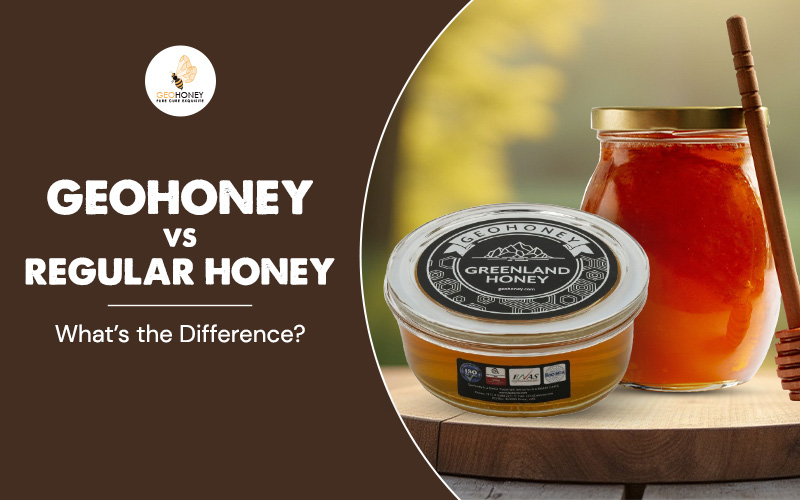
Geohoney
GeoHoney vs Regular Honey – What’s the Difference?
True honey enthusiasts know very well that not all honey is the same in terms of flavor, purity, and quality. The way the ho... read more
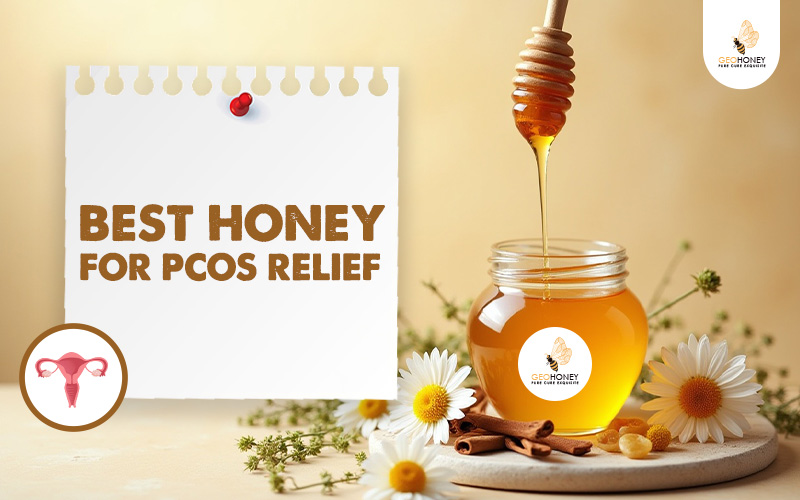
Geohoney
Best honey for PCOS relief
Polycystic Ovary Syndrome or PCOS is a common endocrine, metabolic, and reproductive condition that affects people with ovar... read more

Geohoney
Nature's Unbeatable Technology: What It Takes to Create Artificial Bee
In this era of scientific breakthroughs and engineering excellence, there are very few things that experts are still not abl... read more
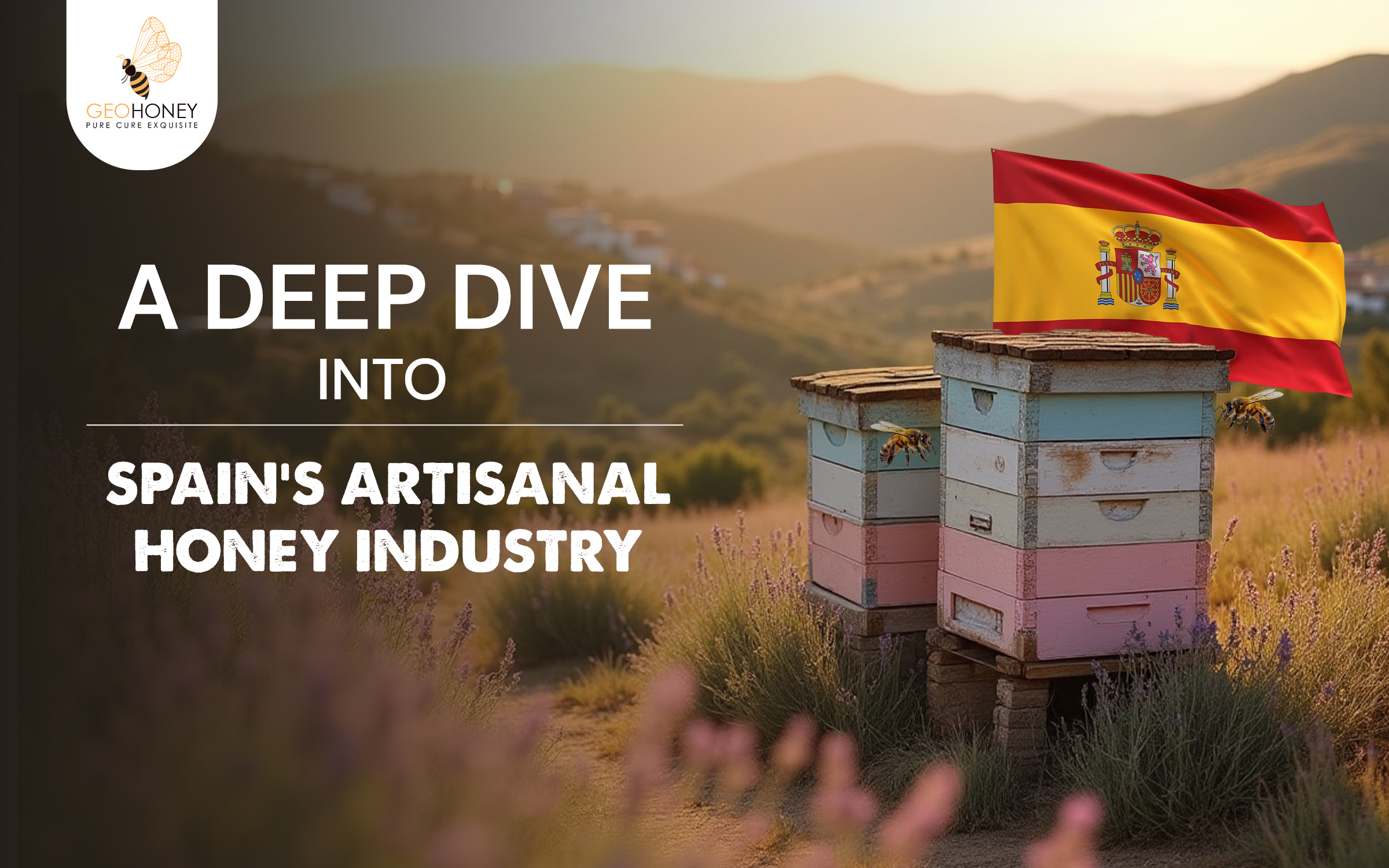
Geohoney
A Deep Dive into Spain’s Artisanal Honey Industry
Spanish artisanal honey is a gourmet food ingredient that also possesses exceptional medicinal and healing properties. This... read more




